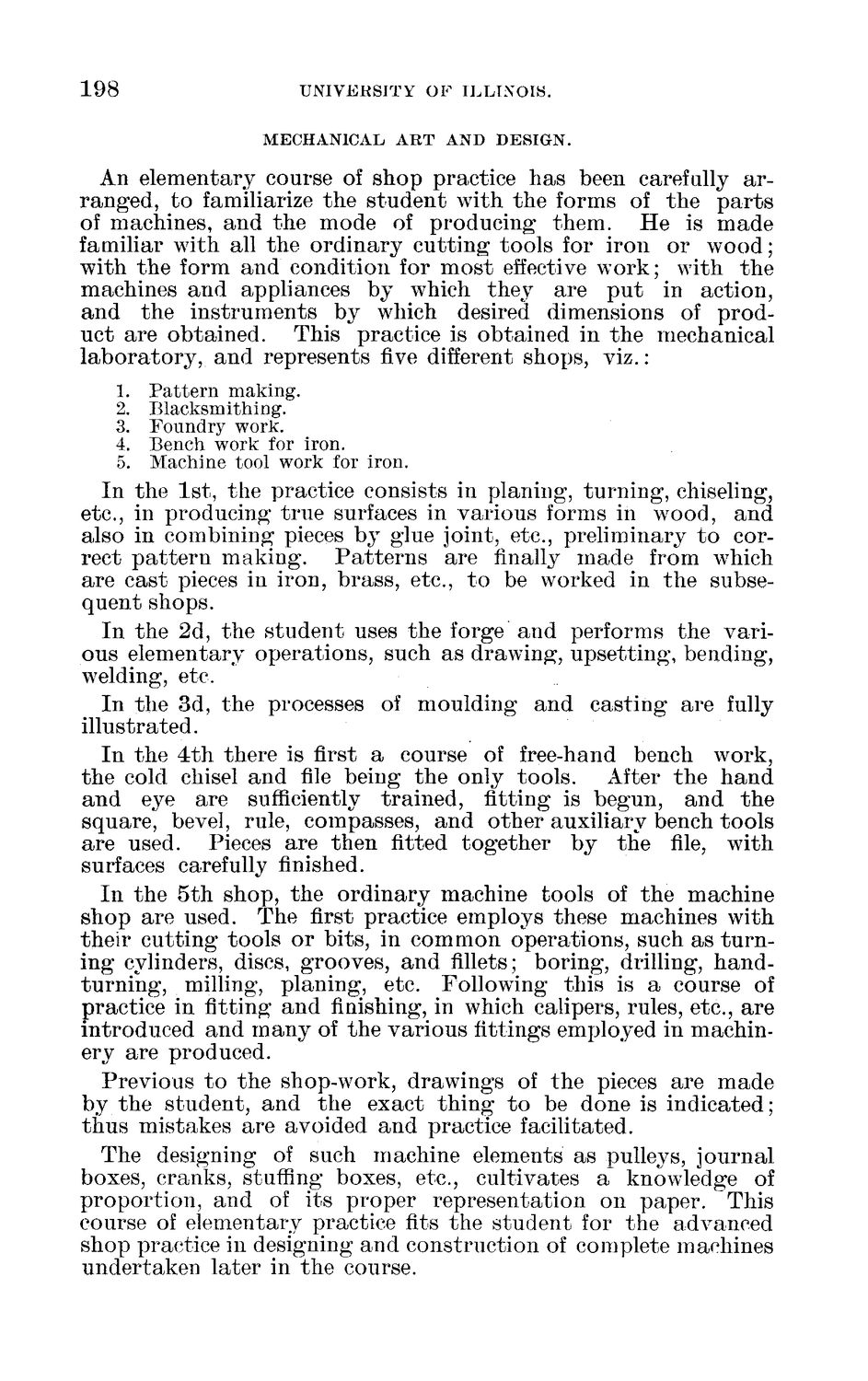| |
| |
Caption: Board of Trustees Minutes - 1890
This is a reduced-resolution page image for fast online browsing.

EXTRACTED TEXT FROM PAGE:
198 UNIVEKSITY OF ILLINOIS. MECHANICAL ART AND DESIGN. An elementary course of shop practice has been carefully arranged, to familiarize the student with t h e forms of t h e p a r t s of machines, and the mode of producing them. He is m a d e familiar with all the ordinary cutting tools for iron or wood; with t h e form and condition for m o s t effective work; with t h e machines and appliances by which they are p u t in action, and the instruments by which desired dimensions of product are obtained. This practice is obtained in the mechanical l a b o r a t o r y , and represents five different shops, viz.: 1. Pattern making. 2. Blacksmithing. 3. Foundry work. 4. Bench work for iron. 5. Machine tool work for iron. In the 1st, the practice consists in planing, turning, chiseling, etc., in producing true surfaces in various forms in wood, and also in combining pieces by glue joint, etc., preliminary t o correct p a t t e r n making. P a t t e r n s are finally made from which are cast pieces in iron, brass, etc., t o be worked in t h e subsequent shops. In the 2d, the student uses the forge and performs the various elementary operations, such as drawing, upsetting, bending, welding, etc. In the 3d, the processes of moulding and casting are fully illustrated. In the 4 t h there is first a course of free-hand bench work, the cold chisel and file being the only tools. After t h e h a n d a n d eye are sufficiently trained, fitting is begun, and t h e square, bevel, rule, compasses, and other auxiliary bench tools are used. Pieces are then fitted together by t h e file, with surfaces carefully finished. In the 5th shop, the ordinary machine tools of t h e machine shop are used. The first practice employs these machines with their cutting tools or bits, in common operations, such as turning cylinders, discs, grooves, and fillets; boring, drilling, handturning, milling, planing, etc. Following this is a course of practice in fitting and finishing, in which calipers, rules, etc., are introduced and m a n y of t h e various fittings employed in machinery are produced. Previous t o t h e shop-work, drawings of the pieces are made by the student, and the exact t h i n g t o be done is indicated; t h u s mistakes are avoided and practice facilitated. The designing of such machine elements as pulleys, journal boxes, cranks, stuffing boxes, etc., cultivates a knowledge of proportion, and of its proper representation on paper. This course of elementary practice fits the student for the advanced shop practice in designing and construction of complete machines undertaken later in the course.
| |